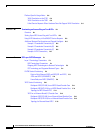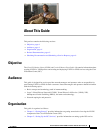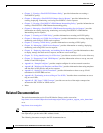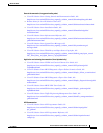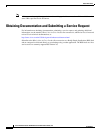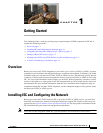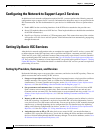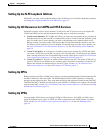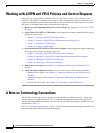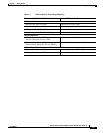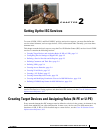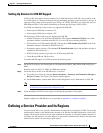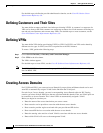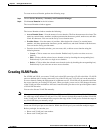
1-4
Cisco IP Solution Center L2VPN and Carrier Ethernet User Guide, 6.0
OL-21636-01
Chapter 1 Getting Started
Working with L2VPN and VPLS Policies and Service Requests
Working with L2VPN and VPLS Policies and Service Requests
After you have set up providers, customers, devices, and resources in ISC, you are ready to create
L2VPN or VPLS policies, provision service requests (SRs), and deploy the services. After the service
requests are deployed you can monitor, audit and run reports on them. All of these tasks are covered in
this guide. To accomplish these tasks, perform the following steps.
1. Review overview information about L2 services concepts. See Appendix E, “ISC Layer 2 VPN
Concepts”
2. Set up a FlexUNI, L2VPN, or VPLS policy. See the appropriate chapter, depending on the type of
policy you want to create:
–
Chapter 3, “Creating a FlexUNI/EVC Ethernet Policy.”
–
Chapter 5, “Creating a FlexUNI/EVC ATM-Ethernet Interworking Policy.”
–
Chapter 7, “Creating an L2VPN Policy.”
–
Chapter 9, “Creating a VPLS Policy.”
3. Provision the FlexUNI, L2VPN, or VPLS service request. See the appropriate chapter, depending
on the type service request you want to provision:
–
Chapter 4, “Managing a FlexUNI/EVC Ethernet Service Request.”
–
Chapter 6, “Managing a FlexUNI/EVC ATM-Ethernet Interworking Service Request.”
–
Chapter 8, “Managing an L2VPN Service Request.”
–
Chapter 10, “Managing a VPLS Service Request.”
4. Deploy the service request. See Chapter 11, “Deploying, Monitoring, and Auditing Service
Requests.”
5. Check the status of deployed services. You can use one or more of the following methods:
–
Monitor service requests. See Chapter 11, “Deploying, Monitoring, and Auditing Service
Requests.”
–
Audit service requests. See Chapter 11, “Deploying, Monitoring, and Auditing Service
Requests.”
–
Run L2 and VPLS reports. See Chapter 13, “Generating L2 and VPLS Reports.”
A Note on Terminology Conventions
The ISC GUI and this user guide use specific naming conventions for Ethernet services. These align
closely with the early MEF conventions. This is expected to be updated in future releases of ISC to
conform with current MEF conventions. For reference, the equivalent terms used by the MEF forum are
summarized in
Table 1-1.
See Layer 2 Terminology Conventions, page E-1 for more information on terminology conventions and
how these align with underlying network technologies.



